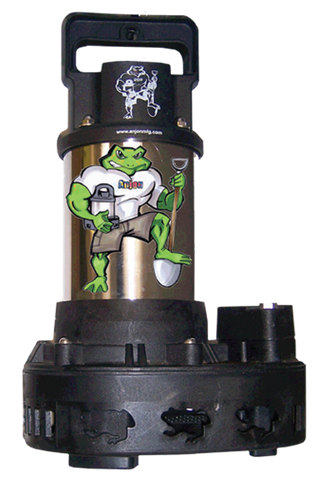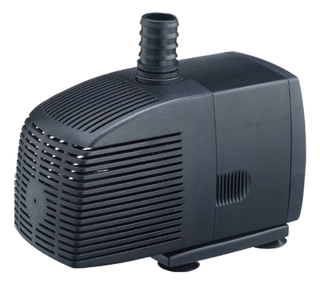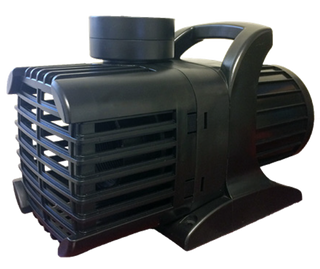Pumps
The pump is the heart of your water feature! Proper selection ensures the right fit and peak performance for your application. Water pumps are either Submersible or External and available in three different types: Direct-Drive, Mag-Drive, or Asynchronous. Keep your pond healthy and looking great by choosing from our large selection of water pumps.
Direct-Drive
Direct-Drive pumps are a great option for customers who have features with high head height and need a large amount of torque. They can handle larger solids and are easier to maintain. Direct-Drive pumps are not for systems with head height of 5 feet or less. Direct-Drive pumps are ideal for hard water situations.
Mag-Drive
Mag-Drive pumps are great for fountains and small water features with a low amount of head height. The magnetic impeller makes the pumps extremely energy-efficient, quiet, and easy to maintain. Note: Mag-Drive pumps are not ideal for hard water conditions.
Asynchronous
Asynchronous (hybrid between direct and mag-drive) pumps have impellers that are magnetized, making them more energy-efficient than the Direct-Drive pumps. They have a higher head height than Mag-Drive pumps. Most sizes are compatible with variable speed controllers.
Pond Type
Water Garden, Few Small Goldfish: Circulate total pond water volume every 2 hours. Example: 2,000 GPH pump for 3000-gallon pond with 2" waterfall.
Fish Pond, Several Small Fish: Circulate total pond water volume every 1 hour. Example: 3,800 GPH pump for 3000-gallon pond with 2" waterfall.
Koi Pond, Several Large Fish: Circulate total pond water volume every 3/4 of an hour. Example: 5,500 GPH pump for 3000-gallon pond with 2" waterfall.
Submersible vs. External
Submersible
Submersible pumps are the right choice when placing the pump inside the pond. We recommend a pump with a large pre-filter screen to reduce maintenance or one that passes larger particles without clogging. We also recommend installing a skimmer to protect your pump, allows easy access for pump maintenance, and act as a filter for the pond.
External
External pumps are the best choice for positioning the pump away from the pond. The pumps in this class produce higher pressure and pulling water from multiple locations so they work well for bottom drains, skimmers, and deck jets. Most koi pond experts choose this style of pump for running large pressure filters.
Head Height
Head Height = Vertical Height + Static Head Pressure
- Vertical Height = vertical distance between pump location (typically in skimmer) and top of waterfall
- Static Head Pressure = pipe length and fittings. Each 10' of tubing and each elbow fitting adds 1'
Example: 3' (vertical height) + 2.5 (25' of tubing) + 2' (for 2 elbows) = 7.5' of Dynamic Head Pressure
Note: Head height is important to take into consideration due to the laws of fluid dynamics.
Tubing diameter, desired GPH, and pump size are important factors when choosing components. Each pipe diameter has a maximum flow rate. For example: a 1.5" pipe will only allow 4,400 GPH to pass through it. Installing a bigger pump (higher cost) 6,000 GPH pump will not increase the flow rate in this example.
| Size | GPH (min.) | Efficiency GPH | GPH (max.) |
|---|---|---|---|
| 0.5" | 60 | <300 | 420 |
| 0.75" | 300 | <720 | 900 |
| 1" | 700 | <1200 | 1500 |
| 1.25" | 900 | <1600 | 3200 |
| 1.5" | 2000 | <2600 | 4400 |
| 2" | 3000 | <4800 | 6800 |
| 3" | 6000 | <9000 | 14000 |
| 4" | 14000 | <21000 | 28000 |
| 6" | 33000 | <42000 | 60000 |
Rectangular Ponds
Length x Width x Average Depth x 7.48 = Gallons
Example: 15’ x 10’ x 1.5’ x 7.48 = 1683 Gallons
Oval Ponds
Length x Width x Average Depth x 0.8 x 7.48 = Gallons
Example: 15' x 10' x 1.5' x .08 x 7.48 = 1346 Gallons
Round Ponds
Radius x Radius x Average Depth x 3.14 x 7.48 = Gallons
Example: 6' x 6' x 3.14 x 1.5' x 7.48 = 1268 Gallons
Streams
Length x Width x 0.25 x 7.48 = Gallons
Example: 20' x 3' x 0.25 x 7.48 = 112 Gallons


Direct-Drive
High head, large torque, handles bigger solids, easy maintenance. Not for head ≤5 ft. Ideal for hard water.


Magnetic Drive
Low head, energy-efficient, quiet, easy maintenance. Great for fountains/small features. Avoid hard water.


Asynchronous
Hybrid pump, magnetized impellers, more energy-efficient than Direct-Drive, higher head than Mag-Drive. Works with variable speed.
There are no products listed under this category.

